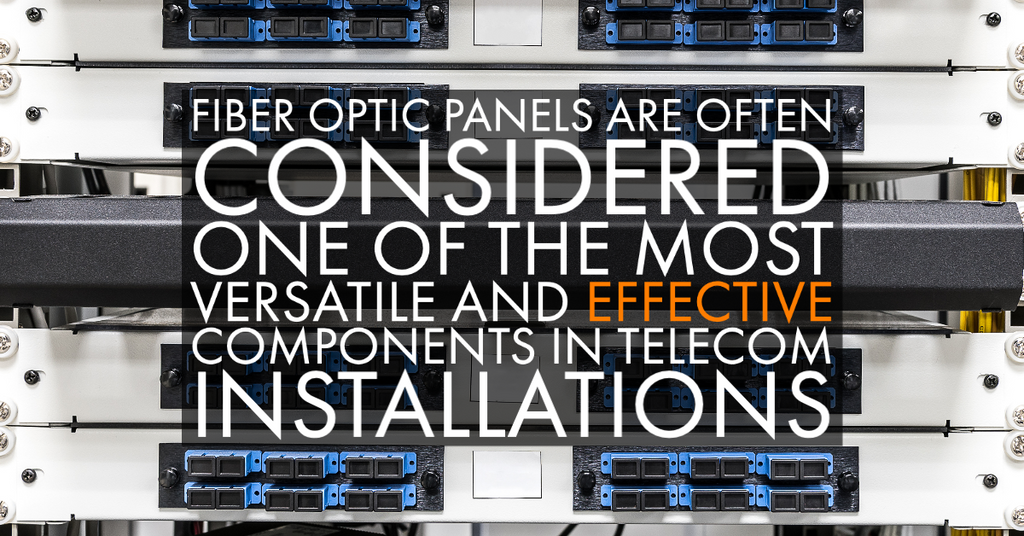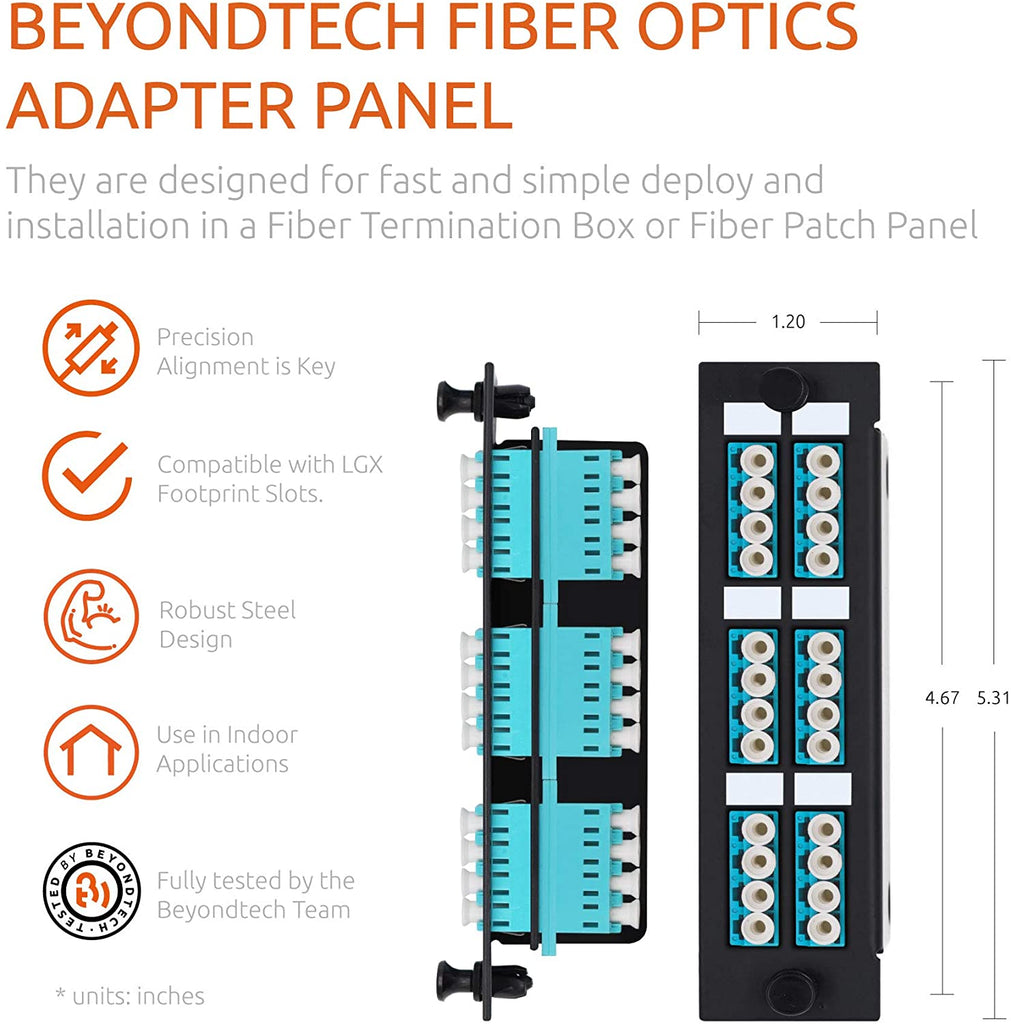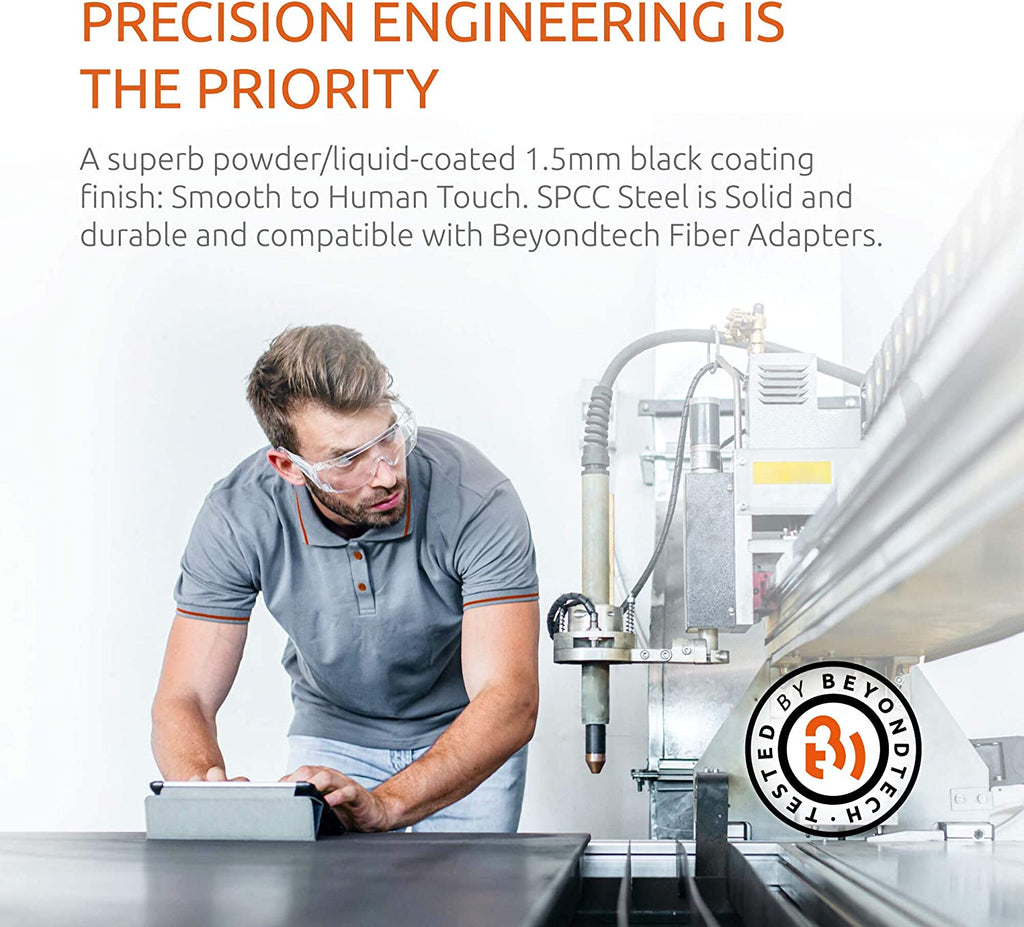Fiber Patch Panels: versatile, convenient and important pieces of Telecom equipment
Fiber Patch Panels: versatile, convenient and important pieces of Telecom equipment
A fiber optic patch panel is essentially a panel that enables the connection of several fiber patch cables with several pieces of optical equipment.
Fiber Optic Patch Panels are typically made of a metal structure that accommodates adapter panels while at the same time leaving space to store the potential excess of long fiber cables. This setup incorporates an array of ports that allows its connection with other types of Telecom equipment that may be placed in further instances of your Optical installation.

Fiber Optic Panels are often considered one of the most versatile and effective components in Telecom installations because they facilitate the connection of several devices by offering an interface that is literally two-folded: the adaptor panel features ports for both the inside and the outside of the enclosure.
On the inside, the ports are fixed due to the fact that the cables need to be connected and fixed at all times. On the outside, and by contrast, the ports are disposed so that fiber patch cables can be connected or disconnected at any instance if it’s required.
Fiber Optic Panels are usually designed to work as trays, which facilitates both their installation and their extraction, which makes them convenient devices not only for connecting Telecom equipment but also for managing space and offering a much needed order in installations that may potentially possess a large quantity of cables and other optical related components.
LGX Standard Dimensions
The standard dimensions of an LGX adapter panel are 130 x 29 mm. Every adapter panel possesses a couple of fasteners and the dimensions of the mounting hole should be 118mm. By its inherent nature, Fiber Optic Panels should be able to offer the ability to cross-connect to other components, since their main objective is work as a bridge between several optical equipment. This standard of dimensions has been agreed amongst the largest Telecom manufacturers to facilitate the connection of pretty much every LGX fiber panel with other enclosures, no matter the brand or the company that builds them.

Why should you use Fiber Patch Panels?
As we have mentioned previously, the usage of Fiber Patch Panels offers many benefits. Mainly, they have been essentially designed to put at the disposal of any Telecom or Fiber technician a smooth, secure and free of hassle termination of fiber patch cables.
Their structure comes handy when it comes to managing and organizing several connections that may include numerous jacks or ports that place them into just one instance. Keep in mind that often optical installations tend to encompass way too many connections, so the fact of having them in just one place facilitates the centralization of those connections.
// <![CDATA[ (function () { var scriptURL = 'https://sdks.shopifycdn.com/buy-button/latest/buy-button-storefront.min.js'; if (window.ShopifyBuy) { if (window.ShopifyBuy.UI) { ShopifyBuyInit(); } else { loadScript(); } } else { loadScript(); } function loadScript() { var script = document.createElement('script'); script.async = true; script.src = scriptURL; (document.getElementsByTagName('head')[0] || document.getElementsByTagName('body')[0]).appendChild(script); script.onload = ShopifyBuyInit; } function ShopifyBuyInit() { var client = ShopifyBuy.buildClient({ domain: 'beyondtech-store.myshopify.com', storefrontAccessToken: '5856eb291843eb6ce4c8c89dfb8ee67f', }); ShopifyBuy.UI.onReady(client).then(function (ui) { ui.createComponent('collection', { id: '69888049215', node: document.getElementById('collection-component-1593526884154'), moneyFormat: '%24%7B%7Bamount%7D%7D', options: { "product": { "styles": { "product": { "@media (min-width: 601px)": { "max-width": "calc(25% - 20px)", "margin-left": "20px", "margin-bottom": "50px", "width": "calc(25% - 20px)" } }, "title": { "font-family": "Roboto, sans-serif", "font-weight": "normal", "font-size": "15px" }, "button": { "font-family": "Roboto, sans-serif", ":hover": { "background-color": "#c85900" }, "background-color": "#de6300", ":focus": { "background-color": "#c85900" }, "border-radius": "1px", "padding-left": "22px", "padding-right": "22px" }, "price": { "font-family": "Roboto, sans-serif" }, "compareAt": { "font-family": "Roboto, sans-serif" }, "unitPrice": { "font-family": "Roboto, sans-serif" } }, "text": { "button": "Add to cart" }, "googleFonts": [ "Roboto" ] }, "productSet": { "styles": { "products": { "@media (min-width: 601px)": { "margin-left": "-20px" } } } }, "modalProduct": { "contents": { "img": false, "imgWithCarousel": true, "button": false, "buttonWithQuantity": true }, "styles": { "product": { "@media (min-width: 601px)": { "max-width": "100%", "margin-left": "0px", "margin-bottom": "0px" } }, "button": { "font-family": "Roboto, sans-serif", ":hover": { "background-color": "#c85900" }, "background-color": "#de6300", ":focus": { "background-color": "#c85900" }, "border-radius": "1px", "padding-left": "22px", "padding-right": "22px" } }, "googleFonts": [ "Roboto" ], "text": { "button": "Add to cart" } }, "option": { "styles": { "label": { "font-family": "Roboto, sans-serif" }, "select": { "font-family": "Roboto, sans-serif" } }, "googleFonts": [ "Roboto" ] }, "cart": { "styles": { "button": { "font-family": "Roboto, sans-serif", ":hover": { "background-color": "#c85900" }, "background-color": "#de6300", ":focus": { "background-color": "#c85900" }, "border-radius": "1px" } }, "text": { "total": "Subtotal", "button": "Checkout" }, "googleFonts": [ "Roboto" ] }, "toggle": { "styles": { "toggle": { "font-family": "Roboto, sans-serif", "background-color": "#de6300", ":hover": { "background-color": "#c85900" }, ":focus": { "background-color": "#c85900" } } }, "googleFonts": [ "Roboto" ] } }, }); }); } })(); // ]]>Otherwise it may get messy, causing a perfect scenario for future malfunction and making debugging and troubleshooting nearly impossible in case of a likely failure in the setup.
Fiber Patch Panels are not only wonderful devices for the installation of equipment due to their convenient building as trays, they also make changes within the installation easier to handle. In case you need to extract a particular device or you need to make modifications amongst the connections, by just simply pulling out the tray you can change what is needed in your setup. Order is key when you need to update the disposition of your setup -especially in urgent situations.
These Panels can also help you reduce the cost that is provoked by the frequent usage and extraction of both cables and equipment. Since you have everything literally centralized in your panel, you don’t really need to add excessive stress to your Telecom by extracting or re-locating equipment, which will extend the lifecycle of every component involved in your connection.
Beyondtech’s own Fiber Adapter Panels
At Beyondtech, we are very proud to offer our own series of Fiber Adapter Panels. We figured that if we have already managed to become a trusted brand and provider of Fiber Patch Cables, we could as well continue to design, build and distribute other Telecom components to complete the whole picture of Fiber Optic connections.
Supported on the versatility and effectiveness of these Fiber Adapter Panels that we have already elaborated in previous paragraphs, we have decided to offer our own Fiber Adapter Panels to the Telecom market, not only expanding our current catalog of products but also multiplying the nature of our offer.
The Beyondtech Fiber Adapter Panels have been designed for fast and simple deployment and installation in Fiber Termination Boxes or Fiber Patch Panels that require a plate full of couplers to get the job done. They have also been designed with a Robust Steel Design, which makes them durable, great and safe for indoor applications, data centers, telecom and security networks.

Constructed in Steel with Black Color (RAL 9004) and an ElectroStatic Powder Coating, is a great fit for a lot of compatible Patch Panels in the Market. All our LGX Plates are pre-loaded with Beyondtech individually tested Multimode Fiber Optics Adapters, and feature a Simple-Snap-in mechanism for an easy-no tool required setting up.
Our own Beyondtech Fiber Adapter Plate (For Fiber Patch Panel) has been designed to comply with the most relevant and up-to-date Telecom standards, such as : TIA/EIA 568.C, ISO/IEC 11801, EN 50173, IEC 60304, IEC 61754, EN 297-1.
At Beyondtech, we are very pleased and committed to continue growing and improving our reputation in the Telecom market, so we really hope you can join us in this exciting path we have embarked on -bright things lay ahead for you and us in the future.






